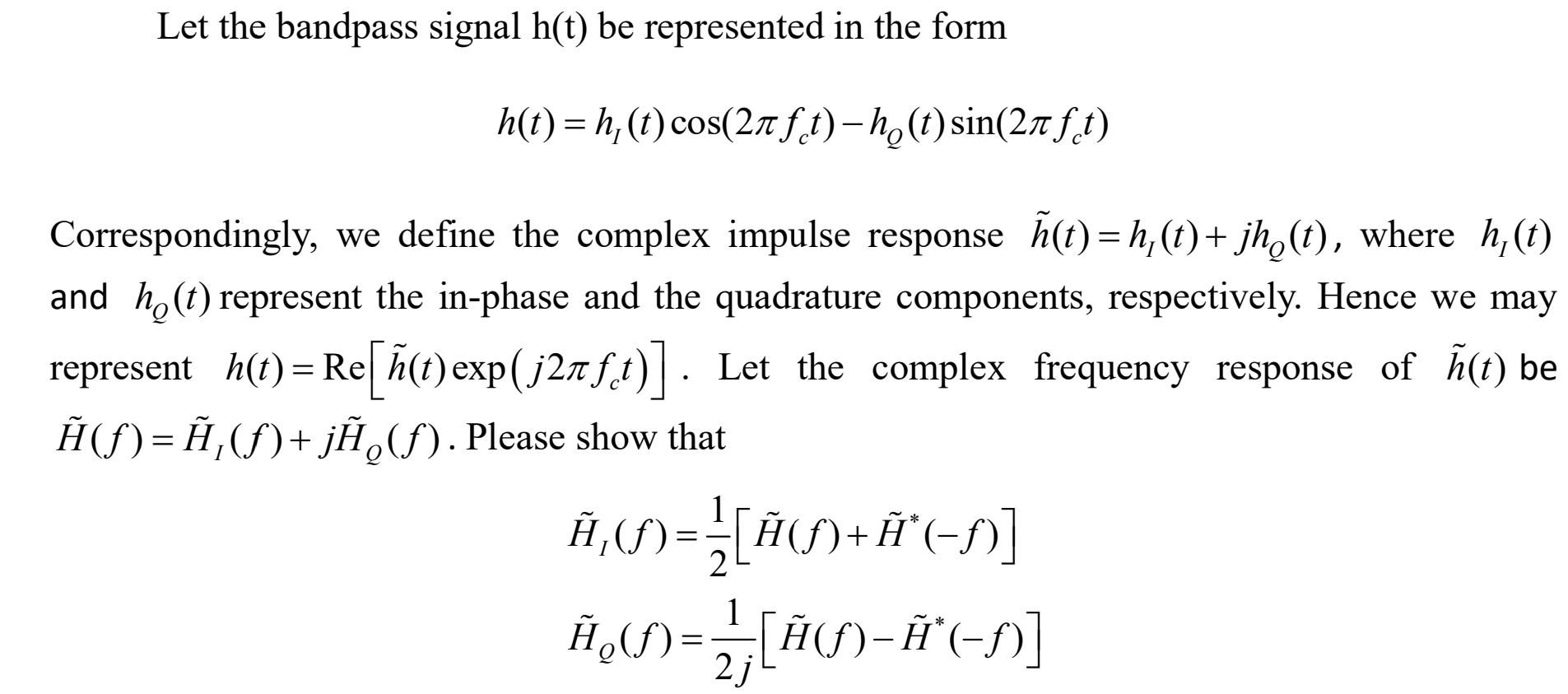Question
Let the bandpass signal h(t) be represented in the form h(t) = h, (t) cos(27 ft)-h(t) sin(2 ft) Correspondingly, we define the complex impulse

Let the bandpass signal h(t) be represented in the form h(t) = h, (t) cos(27 ft)-h(t) sin(2 ft) Correspondingly, we define the complex impulse response h(t)= h, (t) + jho(t), where h,(t) and h(t) represent the in-phase and the quadrature components, respectively. Hence we may represent_h(t)=Re[h(t) exp(j27)]. Let the complex frequency response of (t) be ()= ()+ j(). Please show that A,(S) == - [ A(S) + *(-D)] . 1 R(0)= - [A(0)-A (-D] () 2j
Step by Step Solution
3.48 Rating (164 Votes )
There are 3 Steps involved in it
Step: 1
SOLUTION To show that the real part of the complex frequency response represented as is equal to the ...
Get Instant Access to Expert-Tailored Solutions
See step-by-step solutions with expert insights and AI powered tools for academic success
Step: 2

Step: 3

Ace Your Homework with AI
Get the answers you need in no time with our AI-driven, step-by-step assistance
Get StartedRecommended Textbook for
Discrete Time Signal Processing
Authors: Alan V. Oppenheim, Rolan W. Schafer
2nd Edition
0137549202, 978-0137549207
Students also viewed these Accounting questions
Question
Answered: 1 week ago
Question
Answered: 1 week ago
Question
Answered: 1 week ago
Question
Answered: 1 week ago
Question
Answered: 1 week ago
Question
Answered: 1 week ago
Question
Answered: 1 week ago
Question
Answered: 1 week ago
Question
Answered: 1 week ago
Question
Answered: 1 week ago
Question
Answered: 1 week ago
Question
Answered: 1 week ago
Question
Answered: 1 week ago
Question
Answered: 1 week ago
Question
Answered: 1 week ago
Question
Answered: 1 week ago
Question
Answered: 1 week ago
Question
Answered: 1 week ago
Question
Answered: 1 week ago
Question
Answered: 1 week ago
Question
Answered: 1 week ago
Question
Answered: 1 week ago
View Answer in SolutionInn App



